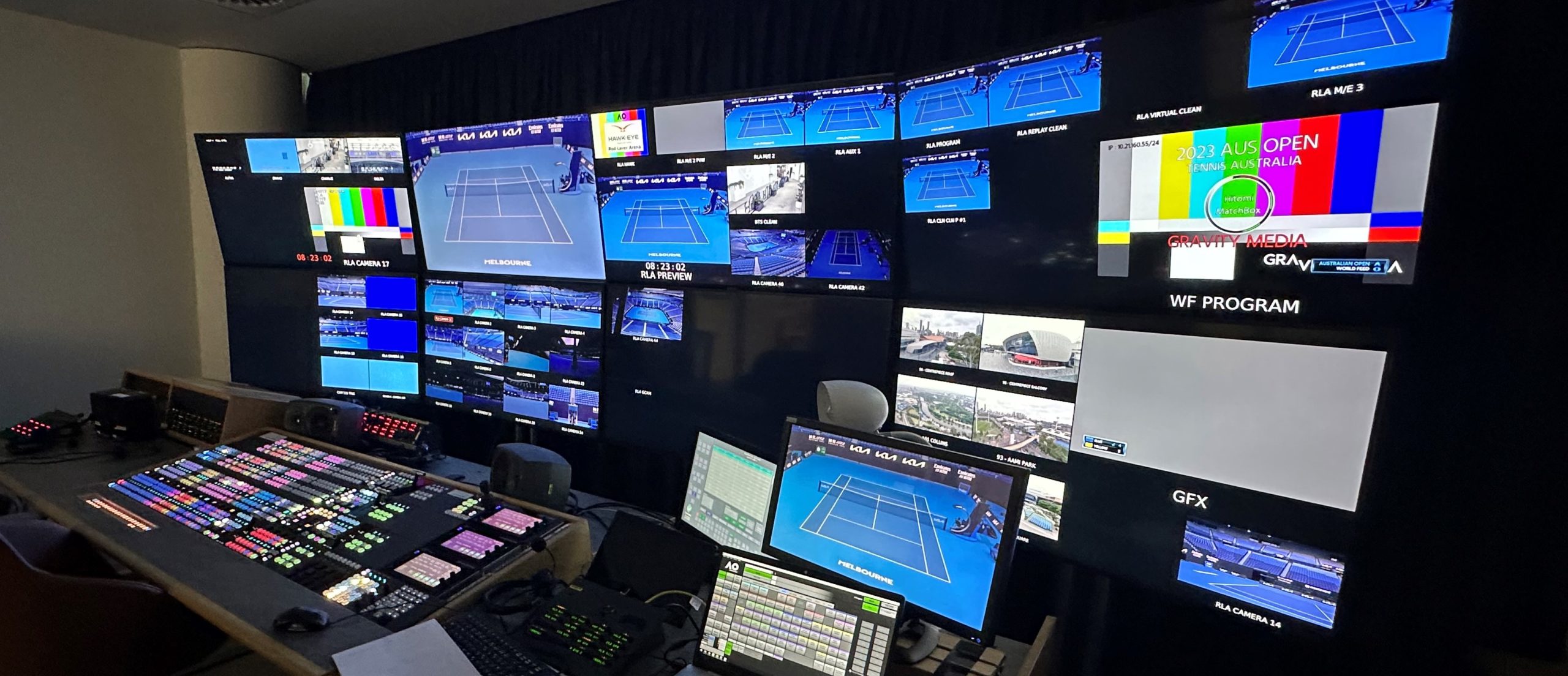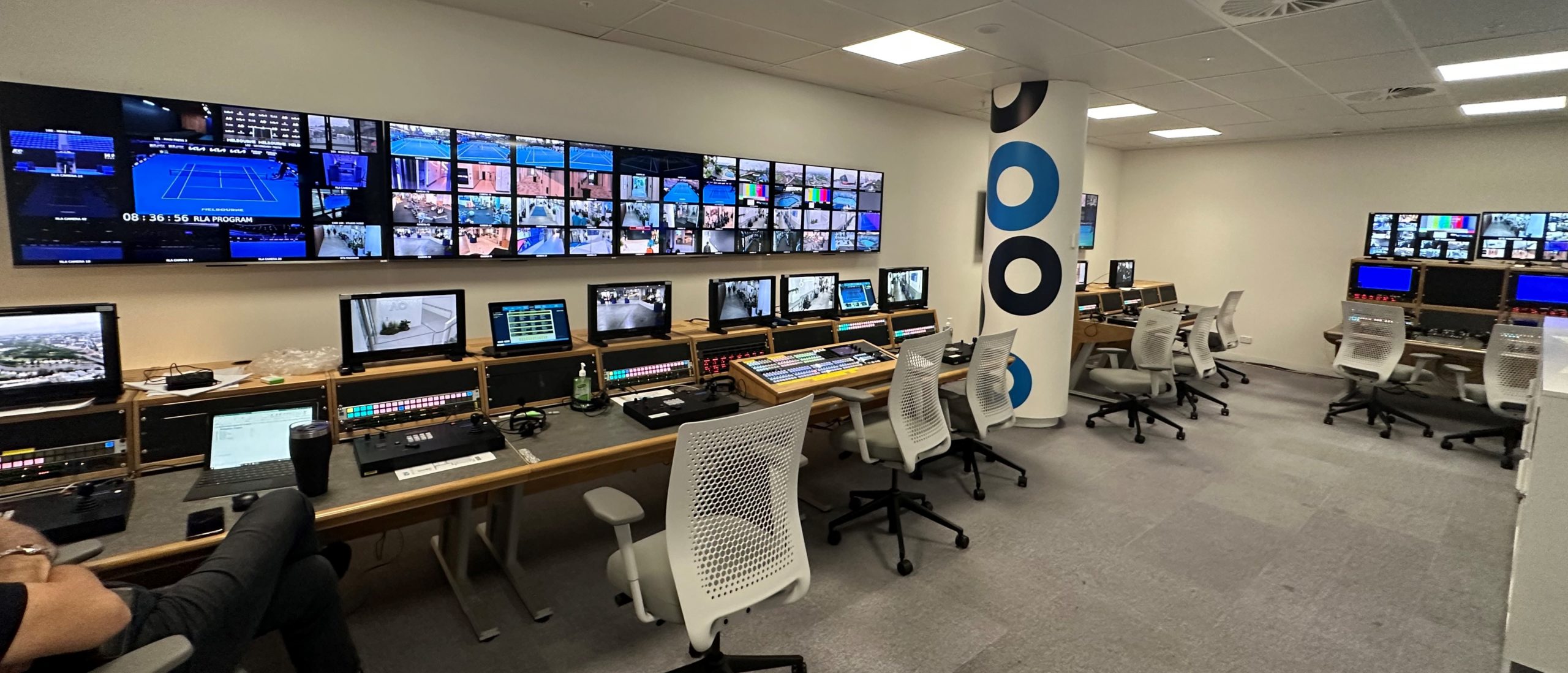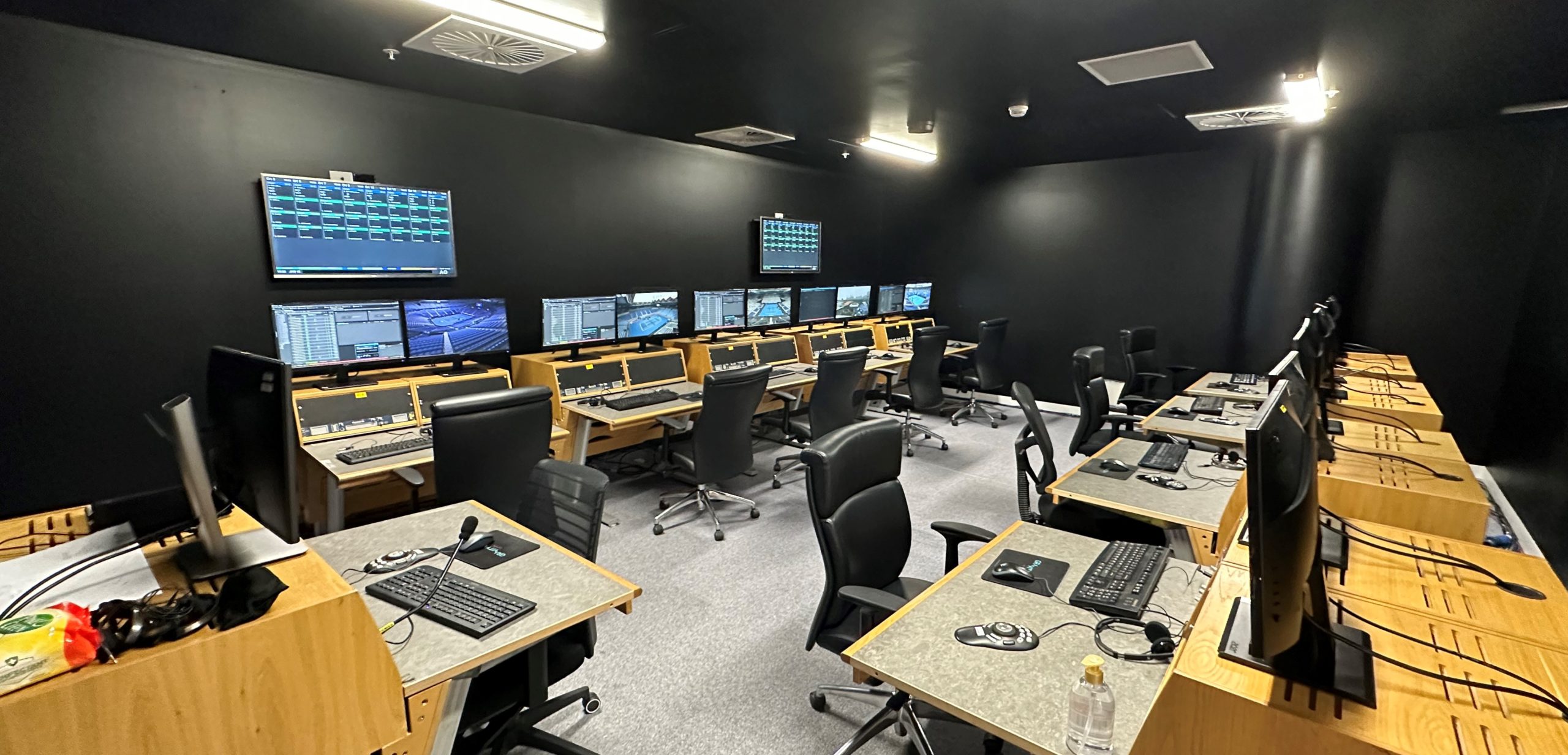Tennis Australia, Gravity Media Efforts at Australian Open Embrace Virtual Advertising
With 165 cameras and 1080i, 1080p, and UHD coverage, rightsholders can deliver all the angles
Story Highlights
The Australian Open is heading into its Championship weekend, and, for Gravity Media, it’s the conclusion of another busy tennis season in Australia: besides the Open, the production-services provider handled the United Cup in Brisbane, Sydney, and Perth and the Adelaide International. This is the ninth year that the company has been the broadcast and technology partner for the “happy slam.”
“In 2005, we provided our first total technical-facility solution for the host broadcast of the Australian Open,” says Kevin Moorhouse, advisor, Gravity Media. “Our role and the requirements for Tennis Australia have evolved dramatically over the past 19 years, and this year’s event is the biggest and most complex operation we have undertaken.”
Melbourne Park is home to the Open, the first major of the season, and 165 cameras are deployed across the entire precinct, including Sony HDC-3500/4300 cameras and various robotic solutions using Sony P43, Hitachi DKH 200, and Panasonic cameras with Mark Roberts PTZF heads. Receive sites allow 16 roving RF cameras to work anywhere within the venue, and two remote RF robotic cameras deliver broader views of Melbourne.
All audio and video signals are delivered to a central apparatus room connected via 500 meters of fiber to the production facility at Tennis Australia headquarters, providing coverage of the 10 outside courts as well as Rod Laver Arena, Margaret Court Arena, and John Cain Arena. Three formats are offered to rightsholders: 1080i, 1080p, and 4K.
“We did the whole event in 1080p/50 and the main court coverage in Rod Laver Arena in UHD,” says Moorhouse. “But many of the unilateral rightsholders onsite still want 1080i program and iso camera splits, so we [converted] 1080p to 1080i for all 165 camera signals.”
It’s a complex undertaking, Moorhouse points out, adding that successful deployment of a high-quality and reliable infrastructure is testament to the Gravity Media crew: “They are extremely talented and hardworking, and I want to thank them, as well as Tennis Australia for once again entrusting us with the delivery of the broadcast and technology undertakings for the Australian Open.”
To achieve system connectivity, Gravity Media deploys an IP-based large “fly-away” system with a level of baseband systems to provide what is effectively a 3,900×3,500 video router. An audio solution integrating Audio Live and Calrec cores allows more than 2,500 audio signals to be routed within the facility.
The production facility has seven production galleries using Kahuna Maverick panels and six audio-control rooms featuring Calrec Artemis consoles. Gravity Media is also deploying 10 Simplylive ViBox vision-mixer systems.
All slow-motion replays, plus archiving and media management, are handled with 25 EVS servers, 52 EVS IPDirectors, 16 EVS XT Access units for real-time transfers and transcoding, three EVS XFiles, and four DBServers, which are SQL servers that host the IPDirector database. During any day’s play, Gravity Media delivers 25-45 streams to the 900 Tb of storage onsite, allowing all the action to be accessed by the host and unilateral broadcasters.
For viewers, one of the “can’t miss it” items is the use of augmented-reality graphics in a way that breaks the mold compared with the other three tennis majors.
“Tennis Australia use Girraphic as GFX provider, and we also have virtual GFX cameras on the top three courts,” says Moorhouse. “On Rod Laver Arena, we have Camera 1, the Spidercam, and Camera 44G as virtual cameras; on [Margaret Court] and [John Cain], we have Cam 44G as a virtual camera. These are used for things like break point, weather, player profiles, and more.”
There are also virtual-advertising elements on the three main courts, and, according to Moorhouse, the efforts are handled by Australia-based Broadcast Virtual. The results are targeted ads sent to five regions: Australia/New Zealand, Europe/MENA/India, Japan, Asia, and North America and Latin America.
“They generate specific targeted adverts for numerous regions in 1080i, 1080p, and UHD,” says Moorhouse. “That means we have 15 different 1080i PGM feeds, seven different 1080p PGM feeds and three different UHD PGM feeds.”
The addition of virtual advertising introduced some timing issues with unilaterals onsite.
“That was an additional technical issue we needed to overcome,” he explains. “For example, ESPN sends their feeds back to Bristol and is cutting their show from Bristol, but the virtual advertisements are added to the program feed, which means those feeds are delayed 1.5 seconds from the camera iso splits [taken] onsite in Melbourne. We have to delay the 30 iso splits by 1.5 seconds so that they are in time with the programming feeds leaving Melbourne.”
Ahead of the Main Event
In the lead-up to the Australian Open, Gravity Media supported Tennis Australia in providing facilities for the inaugural United Cup mixed-teams tournament, as well as the Adelaide International.
For the United Cup, Gravity Media provided production trucks and facilities in Brisbane, Perth, and Sydney, with 28 cameras and multiple EVS replay and edit-suite facilities at each site, along with the Xeebra replay system for use by teams and players.
Additional bespoke Gravity Media fly-away production systems were implemented in Sydney to draw together coverage from multiple cities to create a completely integrated and produced “world feed” for delivery across multiple broadcast and subscription platforms in international markets.
The Adelaide International accessed one of Gravity Media’s state-of-the-art HD production trucks, and the company’s specialized fly-away production solutions accessed 27 cameras across multiple courts to deliver bespoke coverage feeds for Tennis Australia and its domestic and international broadcast partners.



